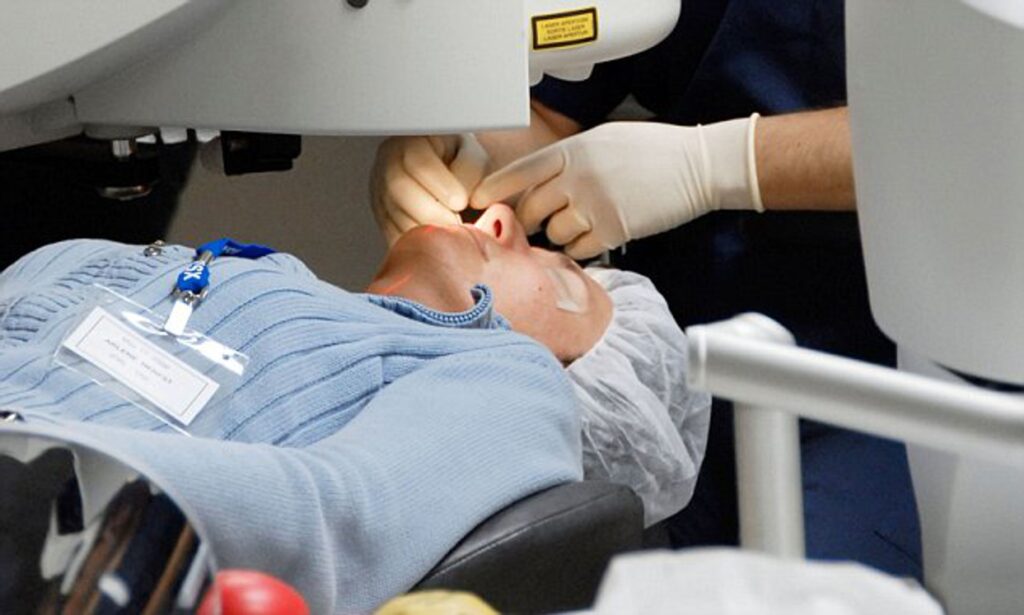We are all born with natural lens in our eyes, but as we get older, the proteins and fibres in the eyes begin to degrade, these are the tissues that makes normal vision of objects possible. Your vision will deteriorate as the lens becomes foggy and unusable in this condition. Cataract surgery is an option if this problem becomes bothersome enough to your daily life.
It is well acknowledged that cataract surgery sydney is among the most frequently performed types of eye surgery. Approximately 28 million people all across the world see it performed each year, with over four million of those coming from the United States alone. Almost 60,000 cataract surgeries are performed every day throughout the world.
Given that a greater percentage of the population will have cataracts by the time they reach 65, and that the majority of individuals with cataracts will seek treatment, it seems likely that these figures will continue to rise.
Moreover, most people can see clearly very immediately after cataract surgery. For elderly people who are having trouble seeing properly, this surgery can be a game-changer. Cataract surgery extends the amount of time they can keep their eyesight by.

How Long Does it Takes to Have a Cataract Surgery Done?
The process to remove a cataract is rapid and may be done in the office of an ophthalmologist, so there is no need to stay overnight in the hospital. If you have cataracts in both eyes, you will need to make two separate sessions, although the actual process only takes around 15-25 minutes per eye.
You may need to schedule an extra half an hour or more for the pre- and post-operative phases of your session. Typically, ocular drops containing an anaesthetic and local anaesthetic are used before surgery. Following the procedure, you will spend 30 minutes resting in the doctor’s designated waiting room.
A cataract surgery visit typically lasts between 60 and 90 minutes. After the procedure, you’ll need a ride home, and you’ll need to schedule follow-up visits with your doctor frequently so they can keep a watch on your vision as it heals.
Is the Effect Short-Term or Permanent?
A typical concern voiced after cataract surgery is whether or not the improvement in vision will continue. They are designed to last a lifetime, but difficulties occasionally occur that need for further procedures.
Cataracts are no longer a concern after cataract surgery since the artificial lens used in the procedure is not a living tissue like the original lens was. Furthermore, the artificial lens is made to endure the entirety of your lifespan. Because of this, cataract surgery is a reliable treatment.
However, posterior capsule opacification (PCO) affects up to 20% of all cataract patients. In this case, scar tissue forms behind the intraocular lens, causing foggy or blurry vision similar to that which existed before the scar tissue formed.
The majority of patients who require this procedure will be granted clear vision after a YAG laser capsulotomy, so there’s no need to fear. Cataract surgery risks include POC as well as ocular damage, inflammation, macular edoema, infection, and others.

How the process of removing cataracts is being carried out.
Cataracts cover the eye’s natural, typically clear lens, rendering it useless and requiring replacement. This is analogous to a broken camera lens that must be changed in order to restore correct operation. Regardless of how long you try to manage it and produce images with it, you won’t be able to get the desired results, but ultimately, replacement will be necessary. Cataracts are the same.
The cataract surgical procedure will begin with your eye surgeon creating a very small incision (just a few millimetres in length) in your eye. Next, ultrasonic waves are used to emulsify (break apart) the clouded lens. Small pieces of the natural lens are broken off and then suctioned up.
The artificial intraocular lens (IOL) is inserted by the eye surgeon through the same incision used for the removal of the natural lens. The IOL sits on the lens capsule behind the lens, which should not be damaged during the procedure. After the process there will be no need for sutures, and you won’t experience any discomfort or awareness while you’re awake.
Eye surgeons will use a YAG laser to cut a tiny hole in the posterior capsule if you need a YAG laser capsulotomy because of cloudiness around your lens. Light may now enter the capsule’s entrance, clearing out any haze that may have been present inside.
What to Look Out for as the First Symptoms of Cataracts
Cataracts may be devastating at any age or stage in life. Cataract surgery is necessary to prevent further decline in vision. Though, your eyes will usually have additional difficulties as you become older.
Knowing the symptoms of cataracts early will help you protect your eyesight for the long haul. Vision problems such as cloudiness, blurriness, and distortion, as well as sensitivity to light and seeing halos or glares around lights, are all possible side effects of cataracts.
Problems with night vision, faded colours, double or extra eyes, and a constantly shifting prescription are also signs of a vision problem that can be attributed to cataracts.
Make an appointment with your ophthalmologist right away if you or a member of your family has any of the above problems with their eyesight. Appointments with your eye doctor should be routine even if you’re experiencing no visual issues.
Have Your Eyes Examined Right Away!
If you’re experiencing any of the symptoms of cataract formation mentioned above, whether it still mild or severe, even if you’re worried if you’re going blind? The first step is to book an appointment with an eye doctor for a check-up and diagnosis if necessary.
